
Cu Chi Tunnels – Ho Chi Minh Attraction (Vietnam)
Asia
On the last day of our stay in Ho Chi Minh, we traveled to Cu Chi Tunnels. Even if you have heard or read about the tunnel, walking around this area and witnessing these tunnels in person, is a different experience altogether. A must-visit for the history buffs!
A mixed feeling of awe and despair settles on you, as you slowly saunter into the green surroundings. This is a photo blog exhibiting scenarios from day to day life of people who stayed in these tunnels. We can only imagine various hardships, the inhabitants faced, and perhaps draw inspiration from their tenacity and positive outlook.
About 2-3 hours (60 kms) from Ho Chi Minh City, are the Cu Chi tunnels, home of the legendary underground tunnel network during the 1960s. They stretch up to 250 kms in a complicated yet organised fashion. We combined our trip to the Cu Chi tunnels with a cruise along Mekong River. We visited the Ben Dinh tunnel, which is the most popular one. There is this second tunnel, called Ben Duoc which is about 30 minutes further away from Ho Chi Minh City.
Built by the Viet Congress 1940s to protect themselves against French raids. Later, in the 1960s during the Vietnam War or American War, the Cu Chi tunnels proved to be vital, as they provided strategic control over the rural areas that surrounded the city.
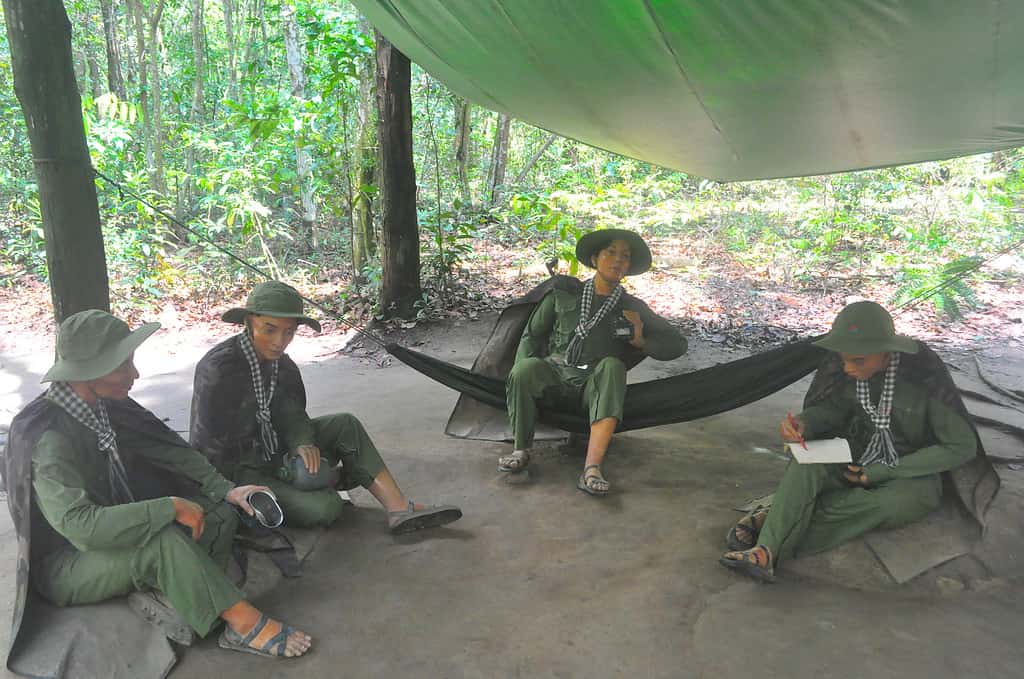
Before proceeding for the underground tunnel tour, visitors can watch a short film of Chu Chi Tunnels for a better understanding on how the tunnel system works.
A trap door neatly camouflaged by dried leaves was shown to us by our guide. It lead down into the Cu Chi tunnels. I got down here fervently and needed two people to pull me out, holding each arm of mine! There was absolutely nothing down there to prop you up! Besides, I still shudder, when I think of the tiny gap that lead further into the tunnel.
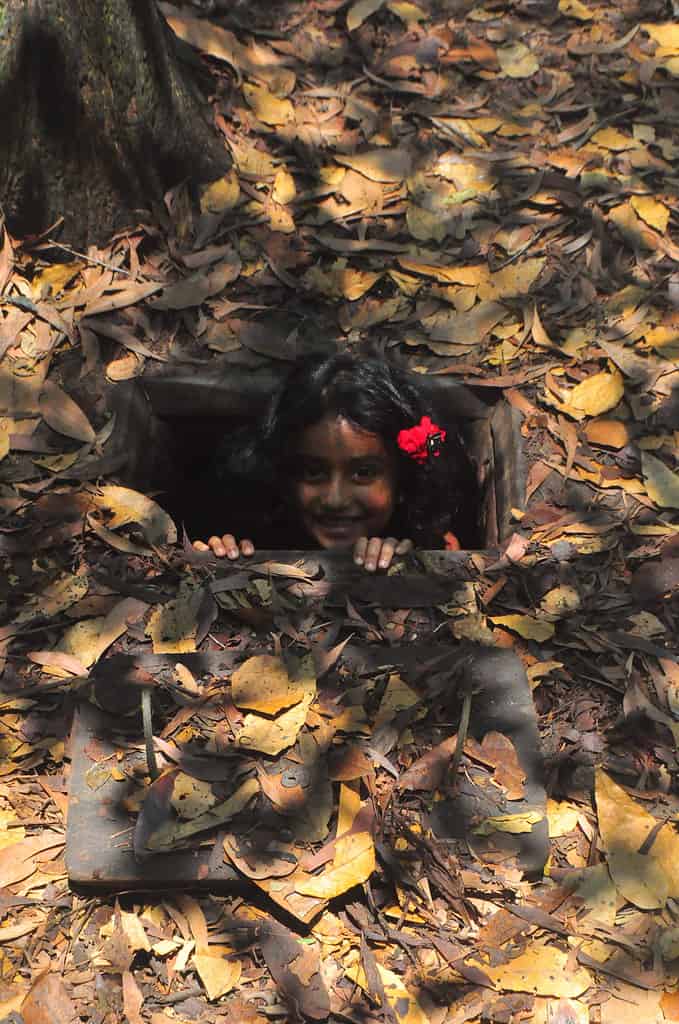
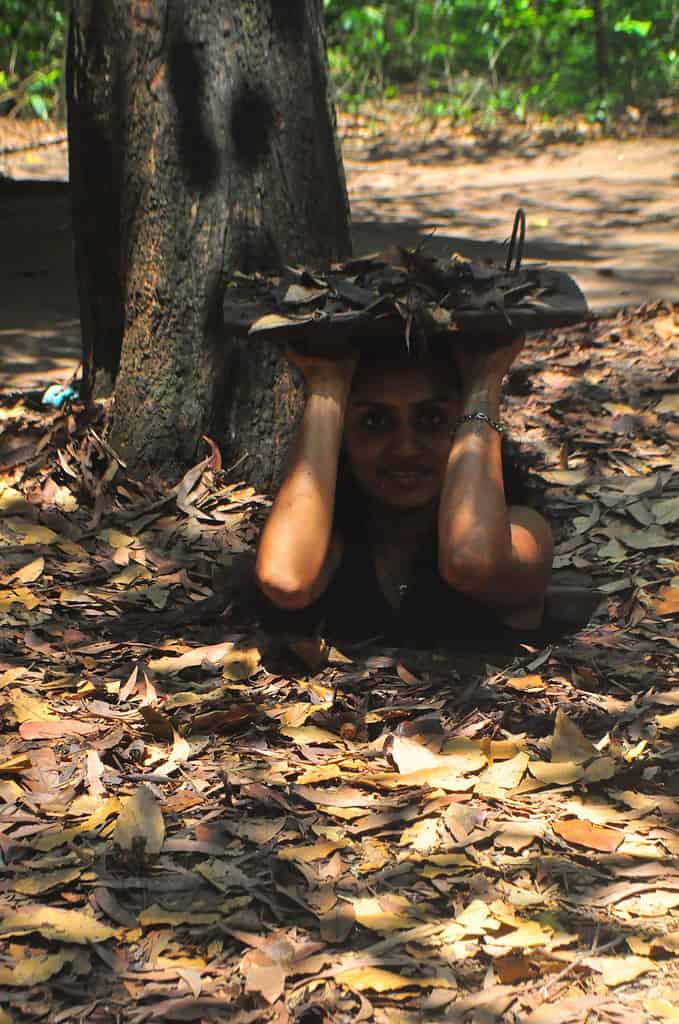
The tunnels that have been modified for the tourists are still a tight fit, as one has to bend waist down and nearly crawl. One has the option to cover 20 meters or go further deep and cover about 40 meters. At the end of 20 meters, stairway has been built for exit. If you are claustrophobic, then you must skip going into the tunnels. That said, the real experience of the place, is deep down into the tunnels.
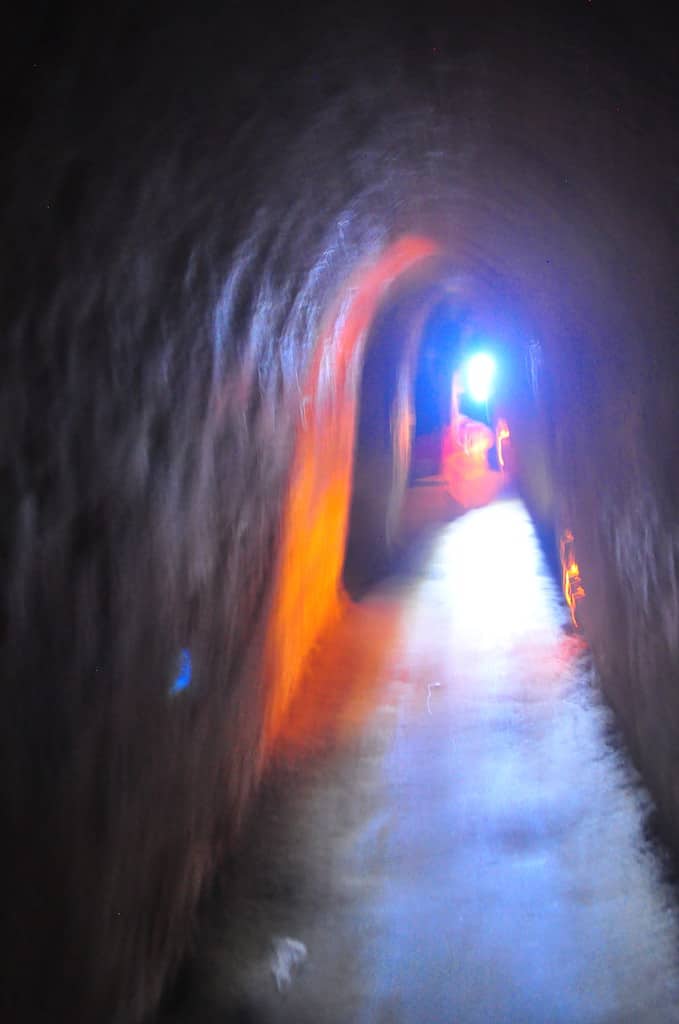
Various kinds of unassuming traps were laid out all across the area.
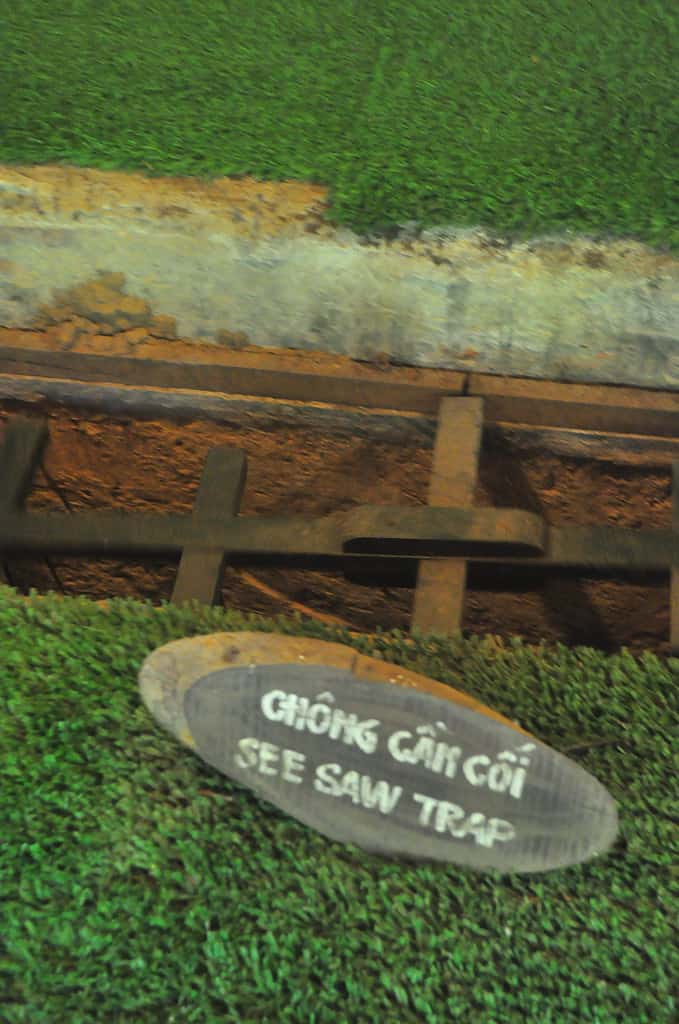
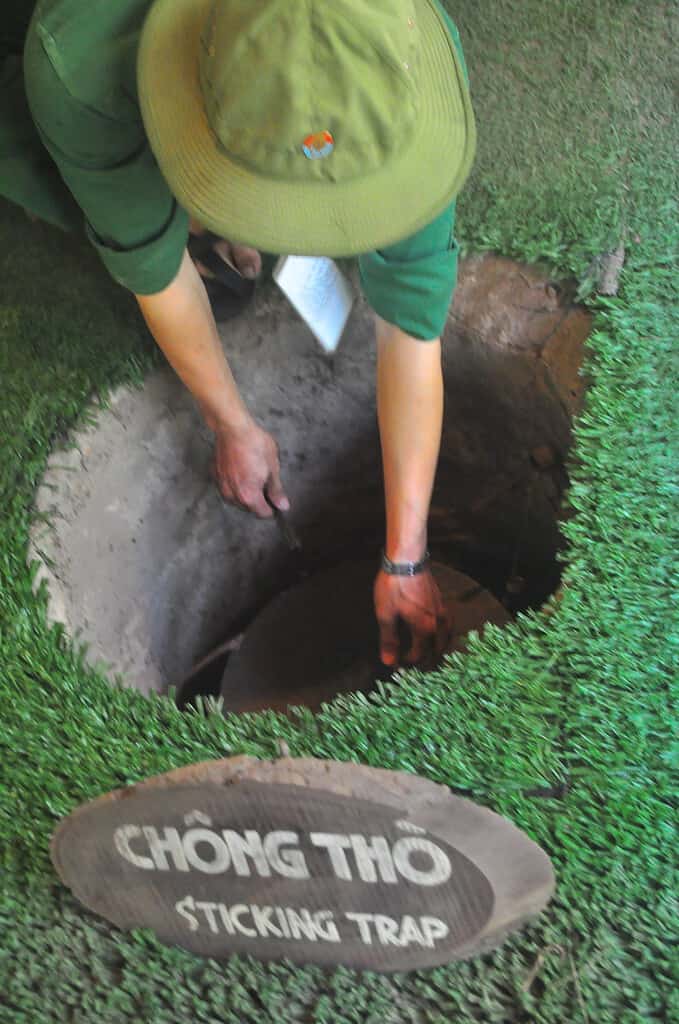

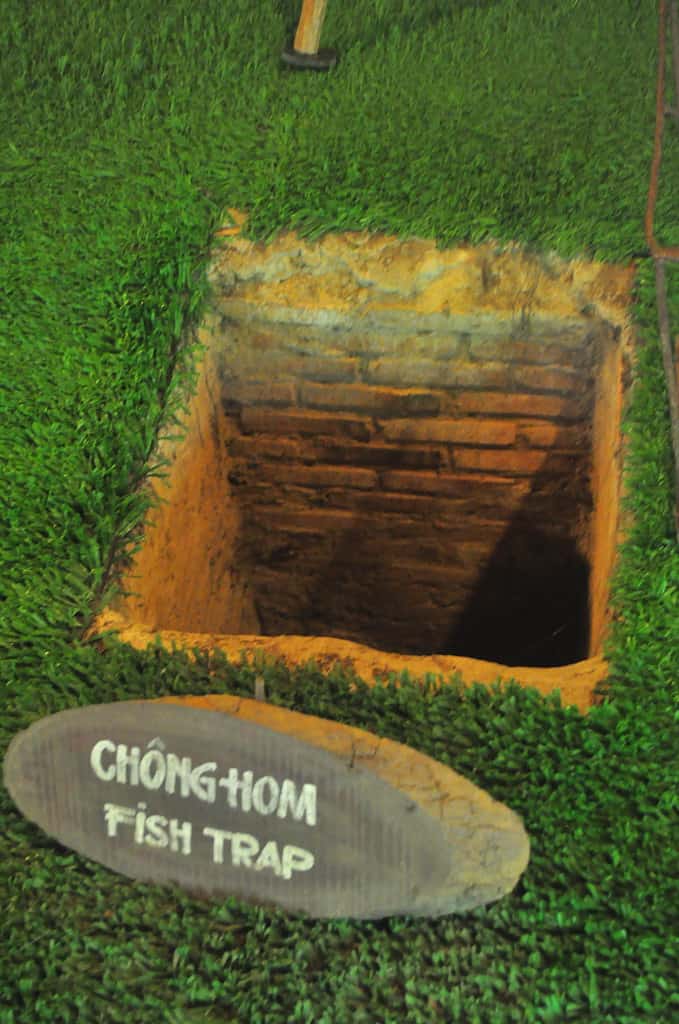
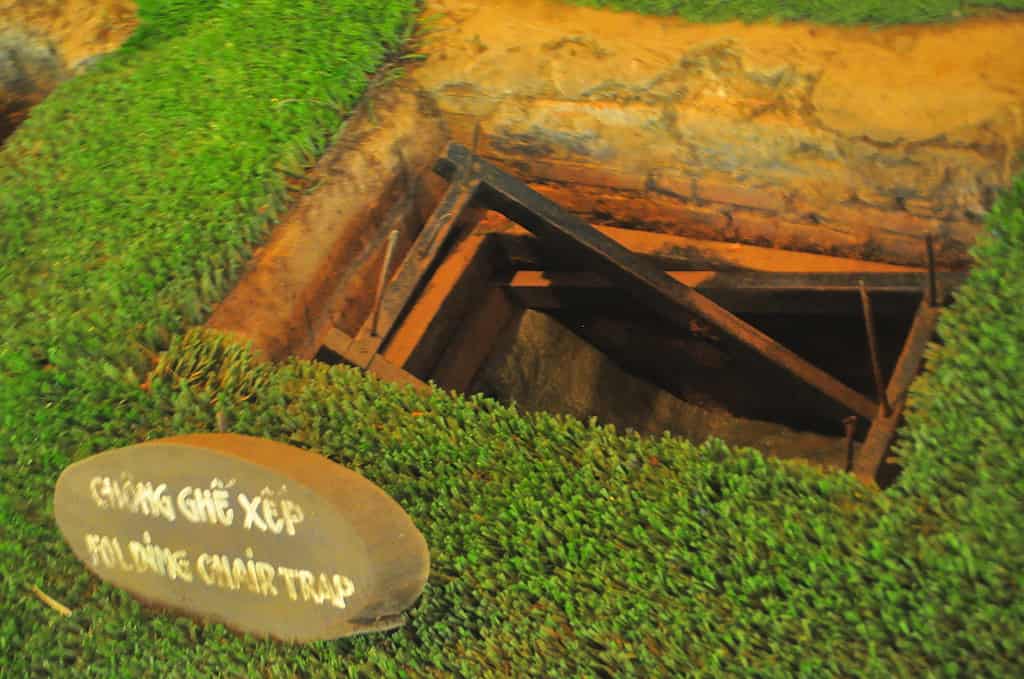
Self sufficient
Hospitals, conference area, uniform stitching units, school, weaponry section, kitchen, dining area, living areas, storage facility etc; the Cu Chi tunnels had it all!
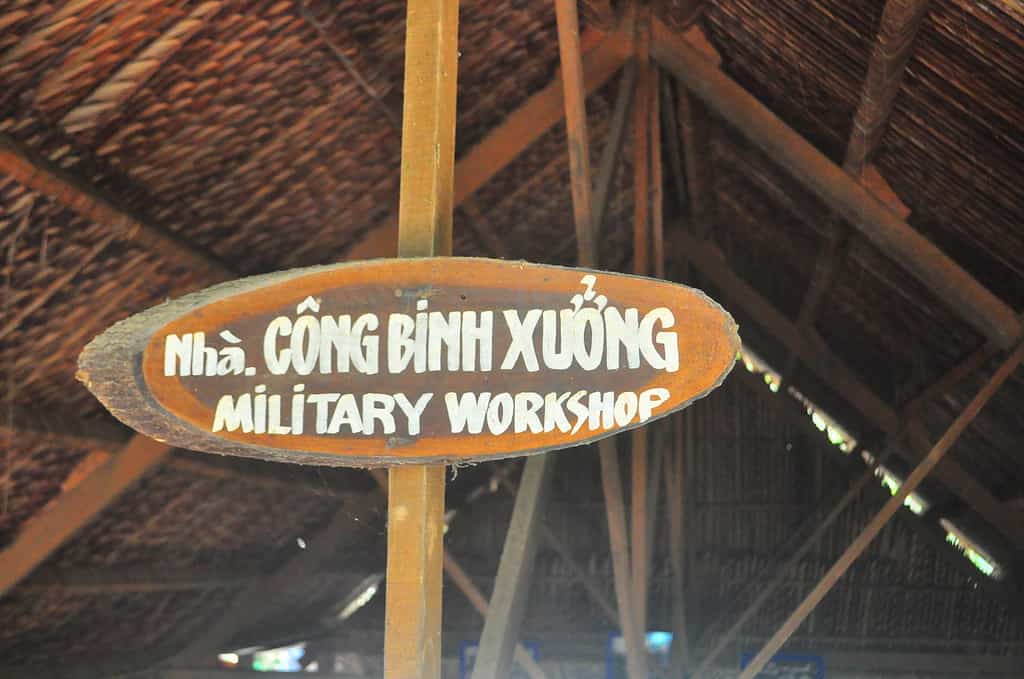
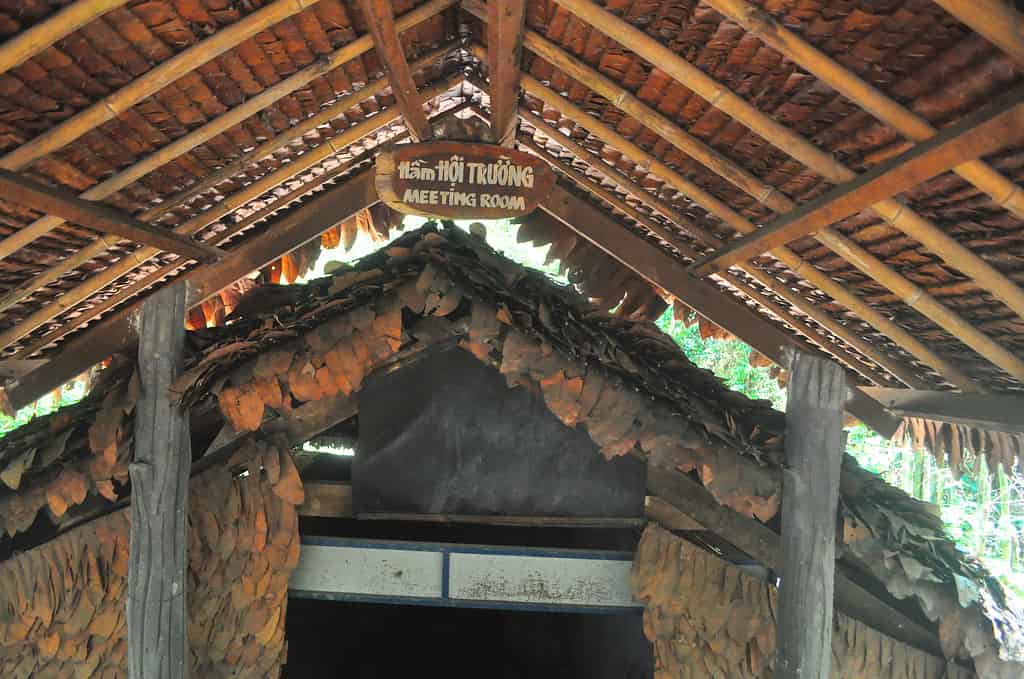
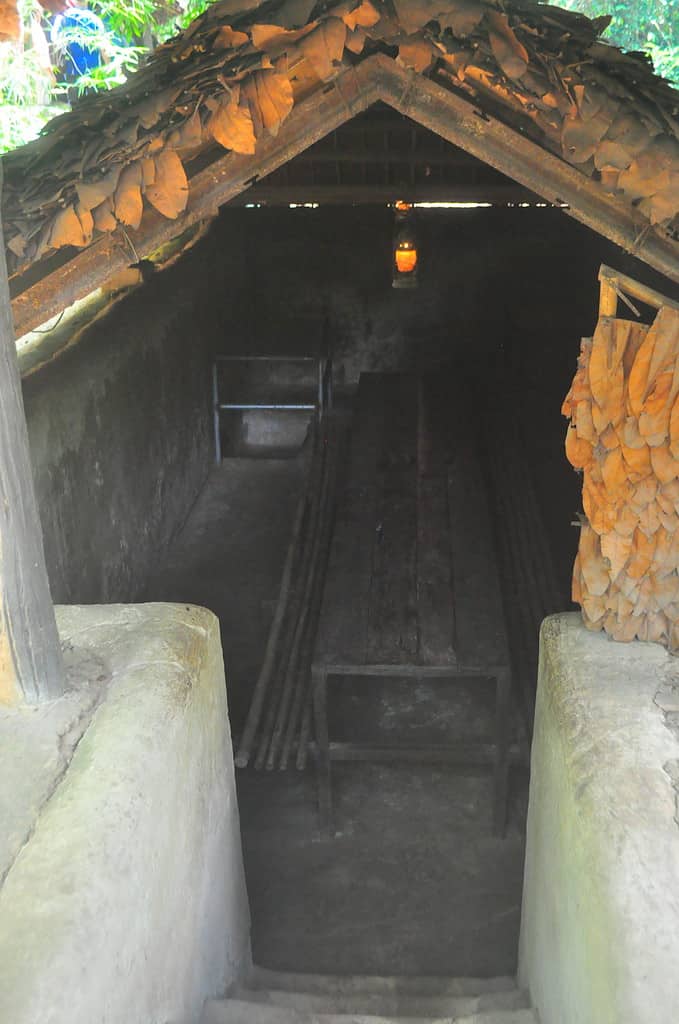
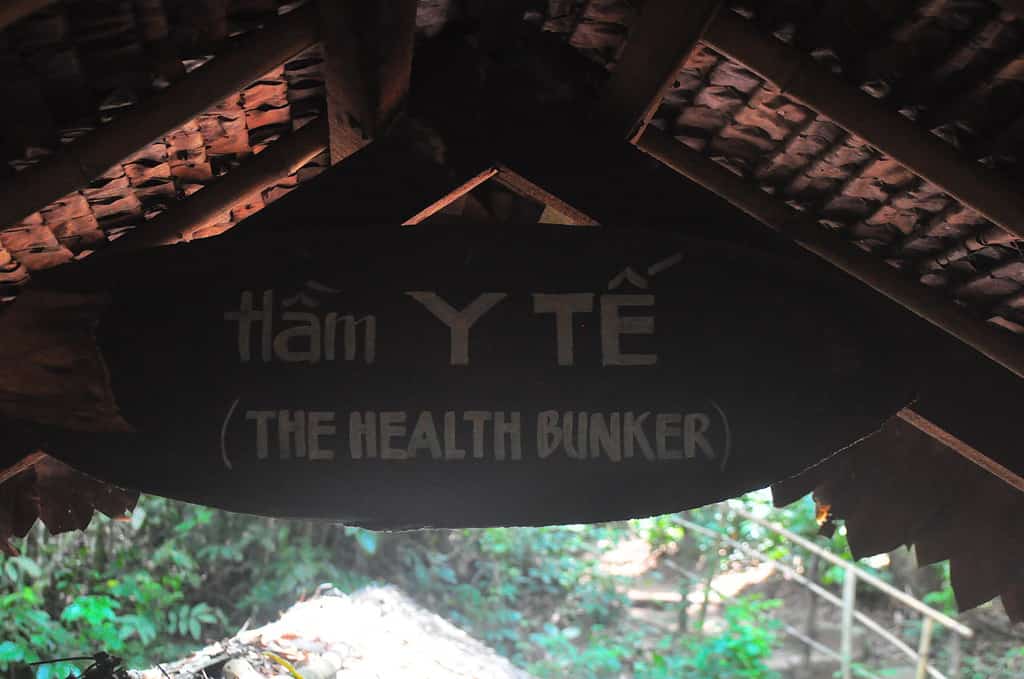
One look at the following picture, we get an impression of an ant hill. However, such camouflaged outlets located far away from actual tunnels, were used to dissipate the smoke emanating from the kitchen area. So that, the enemies during aerial raid, could not spot the smoke, which if let straight out into the air could be clearly visible! This small level of detailing gives us fair amount of idea, of the degree of planning that went behind construction of Cu Chi tunnels.
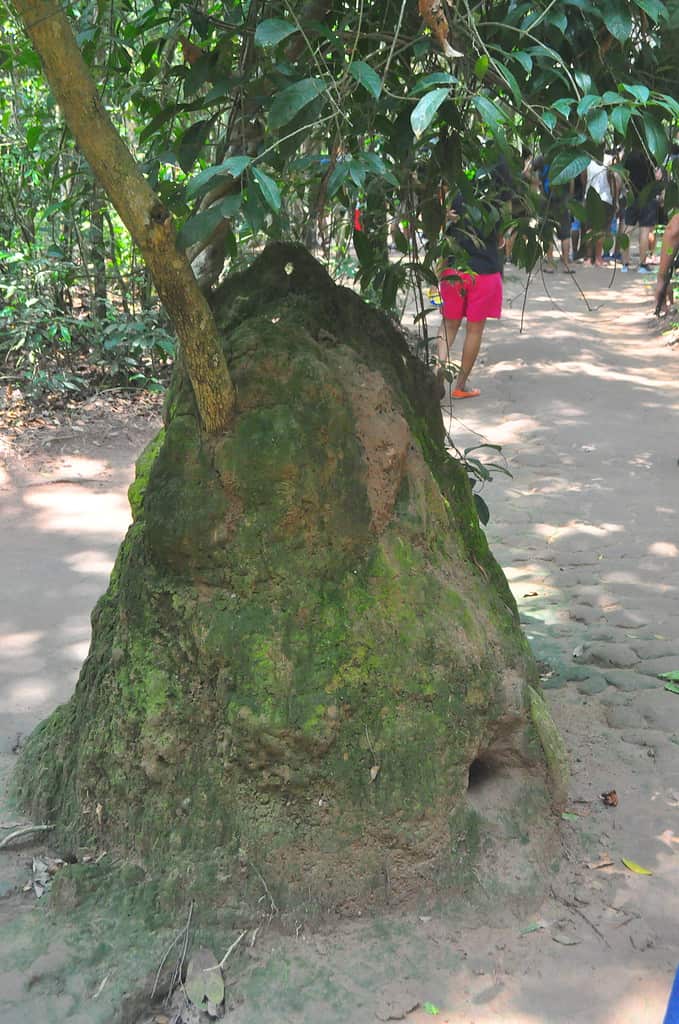
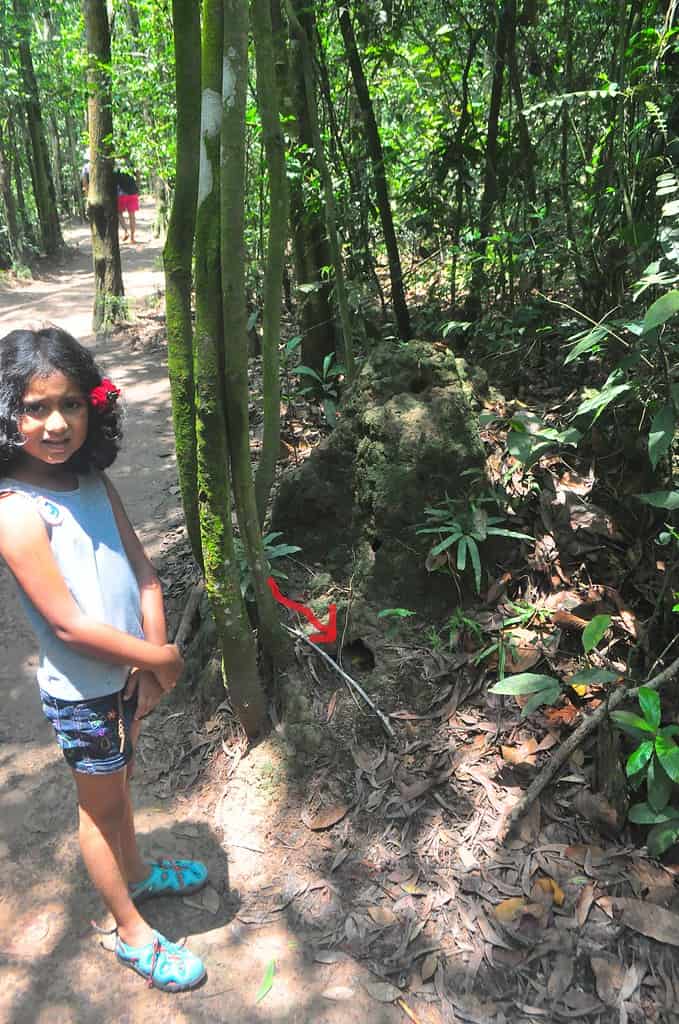
There is a shooting range here, where one can have first-hand experience with rifles and guns! Kids aren’t allowed here. My kids stayed back with our lovely guide, and rested their tiny feet, at the snack outlet close to the range, while their father and I went to the shooting range.
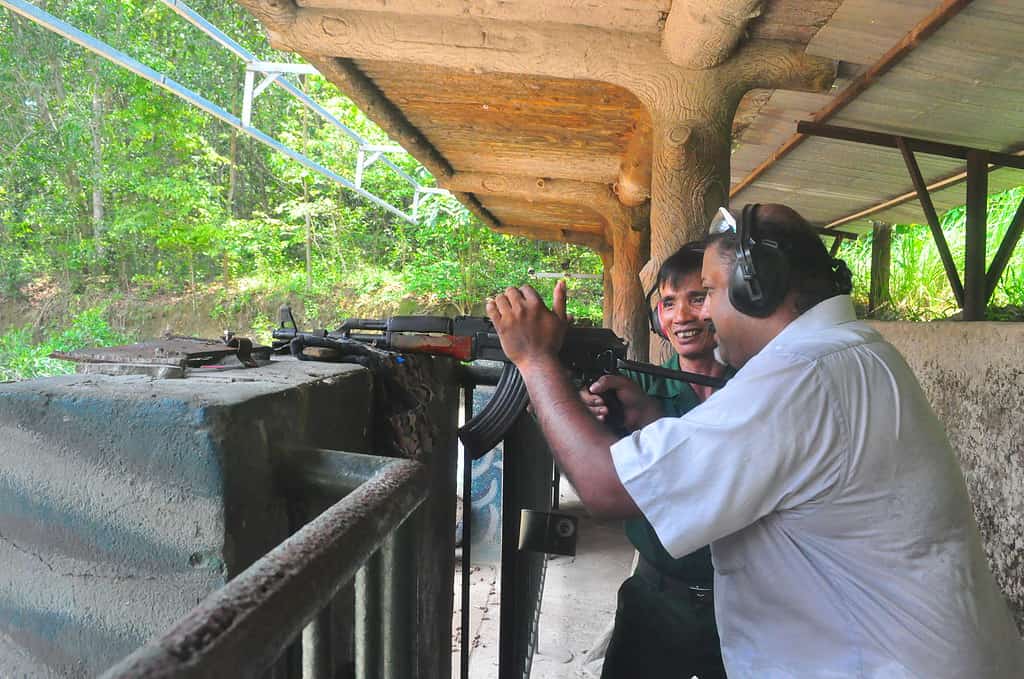
You can watch live, making of rice paper at one of the shacks. You can watch the video ‘Making of rice paper’ here.

That was a sneak peak into the lives of Vietnamese soldiers and the villagers who were forced to pick up arms, at the times of war.
Till next time!
